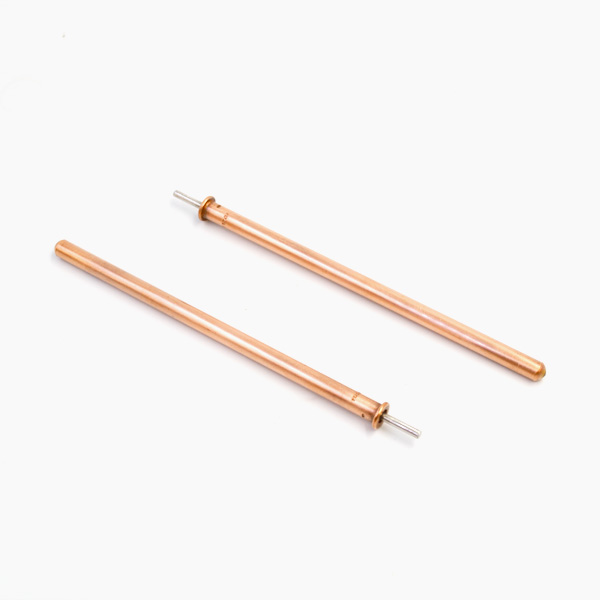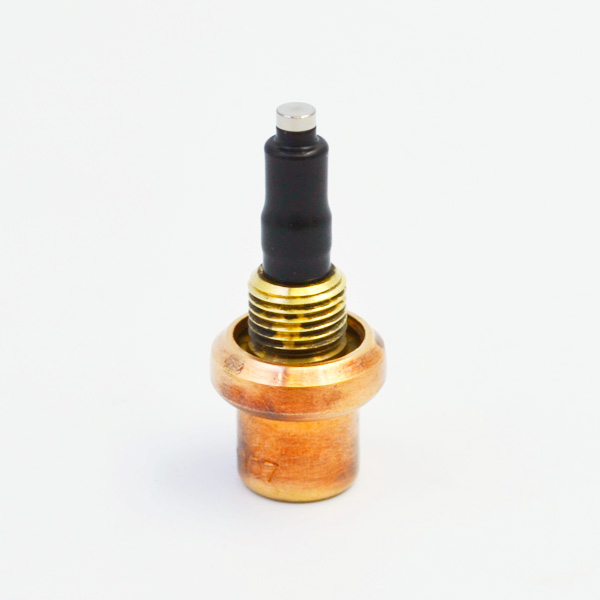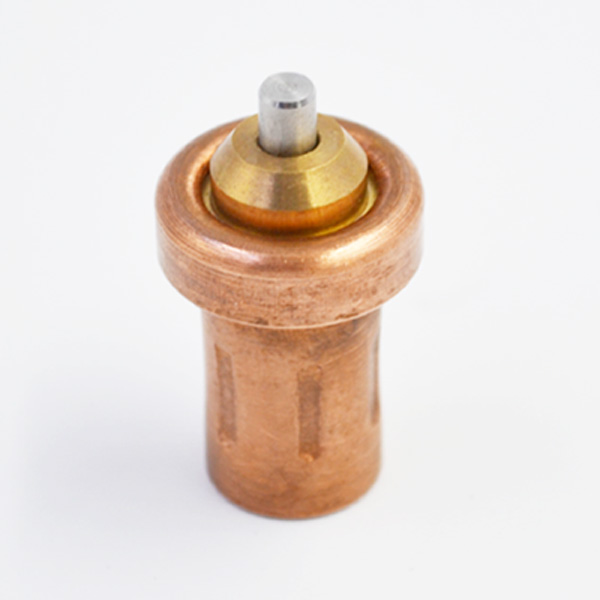With the wide application of AC motor in the field of electromechanical servo, the hardware design and implementation of an AC servo motor controller based on ARM are introduced. PWM signal generation and control, rotor position detection and speed control are realized by using advanced timer, SPI and QEP interface in the selected ARM processor. The main hardware implementation scheme is described. The system has simple structure, high integration and strong real-time performance, and has good practical value. With the rapid development of power electronics technology, digital signal processing technology, computer control technology, sensor technology, motor control theory and so on, AC servo system has made great progress, and has gradually become the mainstream of servo system. Modern AC servo system has the advantages of fast dynamic response, high precision, wide speed range and high reliability, and overcomes the shortcomings of mechanical wear, commutation spark and electromagnetic interference of brushes and commutators of DC motors, so it has been widely used. In this paper, the current popular ARM processor is used to control AC servo motor. Compared with traditional DSP, ARM not only meets the requirements of processing speed and control accuracy, but also meets the requirements of complex control algorithm.

It also has more peripheral interfaces and control circuits of special integrated chip for motor than single chip computer, which can be easily carried out. Real-time control [1].
The servo controller receives the servo system position instructions sent by the host computer through RS422 bus, compares with the current position feedback value, obtains the error signal, processes the control quantity by the control algorithm, and generates the driving current of the servo motor by power amplification, which makes the servo motor rotate according to the magnitude and polarity of the control quantity, and passes through the reducer. The servo system can output the corresponding torque and speed to the command position, thus changing the opening of the flow regulator and realizing the engine working condition control. According to the requirement of servo control system, the hardware realization of servo controller is shown in Figure 1. It is mainly composed of signal processing module, interface driving module and power supply module.

The signal processing module is mainly used to complete the output of PWM driving signal, the acquisition and adjustment of analog signals of three phase currents, bus voltage and bus current, and the excitation of two switching transformers. The interface driver module receives the PWM signal from signal processing module and outputs the driving signal of three-phase motor through driving chip and conditioning circuit. The power module functions as receiving 28V control power supply and 40V drive power supply. The control power supply is converted into the secondary power supply needed by the internal circuit of the controller, and the driving power supply is supplied to the conditioning circuit of the interface driving module after passing through the protective circuit. The 28V control power supply input by the servo controller is converted to 15V through EMI filter circuit and isolated DC/DC module to supply power to analog acquisition and conditioning circuit and discrete acquisition and conditioning circuit. The power supply is converted to 5V for spin-conversion chip, level conversion circuit and voltage regulator. The voltage regulator uses TPS70351 of TI Company to convert and transmit. Voltages up to 1.8V (corresponding maximum output current 2A) and 3.3V (corresponding maximum output current 1A) are used to supply power to MCU, and two reset modes, power-on reset and power monitoring reset, are provided [2].
The input driving power supply voltage of the servo controller is 40V. After surge current suppression circuit and back EMF suppression circuit, the servo controller is output to the high side of the motor driver chip to supply power. MCU chooses ARM Cortex M4 processor STM32F407IGT7 of Semiconductor Company of Italy, which has 1Mb FLASH and 192Kb SRAM (including 64Kb CCM data RAM) with memory protection unit, high security, fast operation speed, 168MHz, high accuracy, 6 UART, 24-channel 12-bit 2.4MSPS 3 ADCs, 3-channel 42 Mbits/s SPI interface. Two 16-bit timers and two 32-bit timers can be configured into three-phase PWM output channel and orthogonal coding unit. The analog acquisition circuit mainly completes the acquisition and adjustment of phase current, bus voltage and bus current signals of three-phase motor. When AC servo motor works at rated state, bus current is about 15A, and the range of phase current sensor should be 3-4 times of rated current. At the same time, because the current in winding can flow bidirectionally, ACS758LCB100B is chosen. Hall current sensor has a maximum measuring range of ( 100A). Its typical operating temperature range is 40 ~150 C. Its bandwidth can reach 120 kHz (ambient temperature TA=25 C). The error of current detection is 1.3% at high temperature (25 ~150 C) and 2.4% at low temperature (40 ~25 C).

It meets the application requirements. The circuit adopts typical connection method. Discrete acquisition circuit mainly completes the acquisition and adjustment of electric limit signal and time series signal. Optical coupler HCPL063L is selected for processing. HCPL063L is a high-speed LVTTL compatible 3.3V optocoupler with a speed of 15 MbS. The circuit adopts typical connection method. MCU judges wheel-load signal by reading GPIO status. Rotary conditioning circuit uses AD company’s single chip rotary digital converter to output the primary 10KHz excitation signal needed for the motor’s forward and backward switching operation. The secondary signal after conditioning is retrieved and the angular position and angular velocity information of the motor’s rotor is obtained through internal calculation. The integrated excitation and calculation chip of the R/D converter avoids the external excitation circuit; the calculation accuracy is 10, 12, 14, 16 bits optional, for 12 bits settings, the maximum tracking conversion speed can reach 60,000 r/min, the speed accuracy is ( 2 LSB), which meets the highest speed accuracy requirements of the design; the programmable excitation frequency range is from 2 kHz to 20 kHz, and the amplitude is normative. Circumference is 3.2V~4.0V (Vpp), without AGC and PLL frequency stabilization design, only need to add filter and buffer driver circuit to achieve excitation output; 3 times format position data, digital speed output, digital speed with symbols [3]. The peripheral circuit adopts typical connection method, and communicates and processes with MCU through SPI and QEP interface. The driving chip of motor driving circuit is MSK company’s fully isolated intelligent power three-phase motor driving chip MSK4351. The internal structure is shown in Figure 2. The chip is typically connected with a rated voltage of 500 V, thermostatic element a rated current of 50 A and a switching frequency of 20 kHz. The programmable dead-time circuit is integrated in the module, and the dead-time of PWM signal output from MCU is set by configuring resistance and capacitance between OSC OUT pin and R/C pin, which avoids short-circuit caused by simultaneous conduction of power transistors of upper and lower arms of the same phase. The power supply of control side and drive side has been fully realized internally.

Gas isolation improves the anti-interference ability, greatly simplifies the design of peripheral conditioning circuit; the inverter bridge contains six IGBT power transistors, and parallel fast recovery diodes, respectively. The series sampling resistance on the DC bus is used for current monitoring [4]; the chip temperature-induced pin output is monitored by peripheral temperature monitoring circuit. The (0-5) V signal can realize the over-temperature protection of the driving circuit. There are two RS422 communication circuits in the servo controller, which mainly accomplish the functions of software on-line loading, upper computer communication and parameter recording. The chip chosen is MAXIM’s full-duplex High-Speed Low-Power transceiver chip MAX490. The circuit adopts typical solution and can suppress the internal interference signal caused by too long lines by external matching resistance. To increase the reliable distance and speed of communication and meet the requirements of field test bed operation, the level signal after MAX490 conditioning can be directly connected to the UART interface of MCU processor without external protocol chip or logic control unit. This paper presents the hardware design and implementation of an AC servo motor controller based on ARM.
Firstly, the working principle of the control system is introduced, and then the specific hardware implementation scheme of the controller is introduced in detail. Through practical use and joint test, the servo controller has reasonable design and good functional performance, which meets the needs of the use and control of electromechanical servo system, and has the advantages of high real-time and high reliability. It has a good reference role for the use and promotion of ARM chip in electromechanical servo system.
